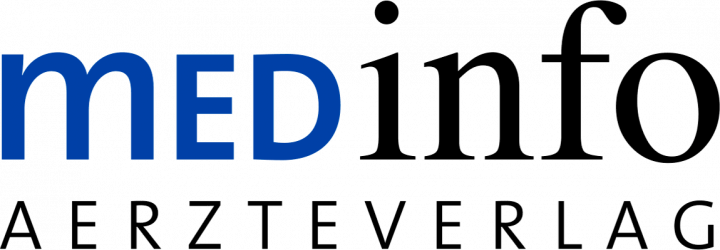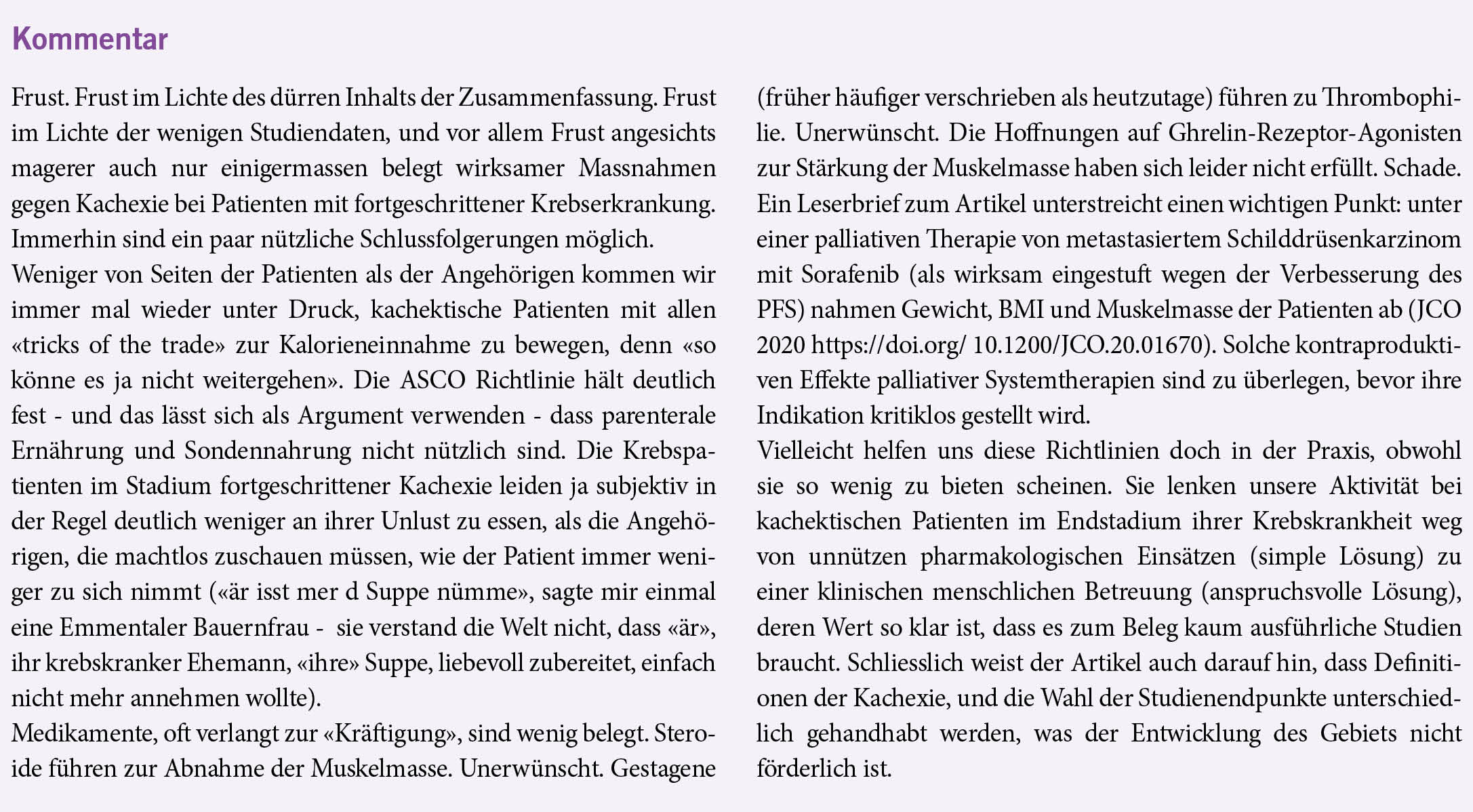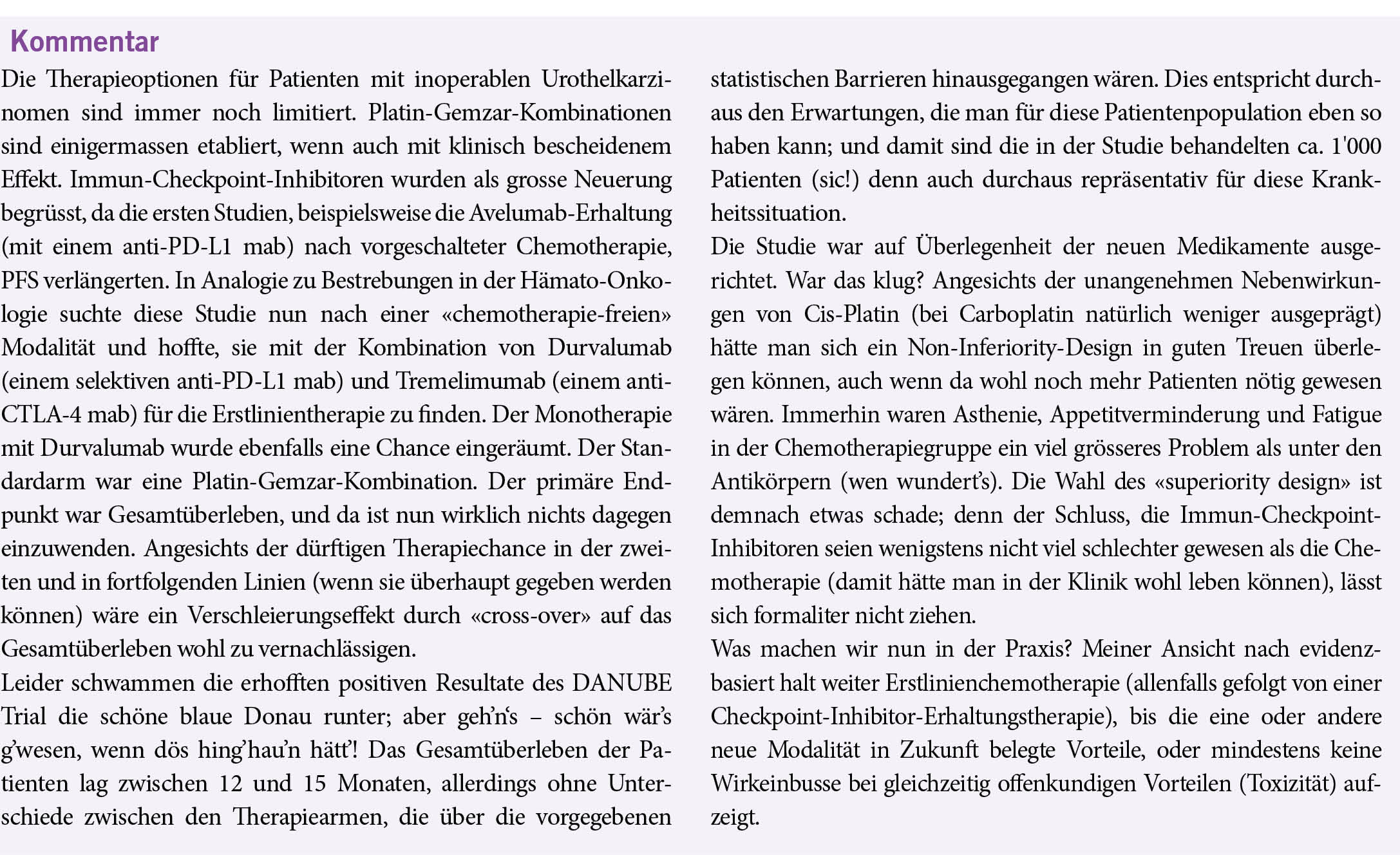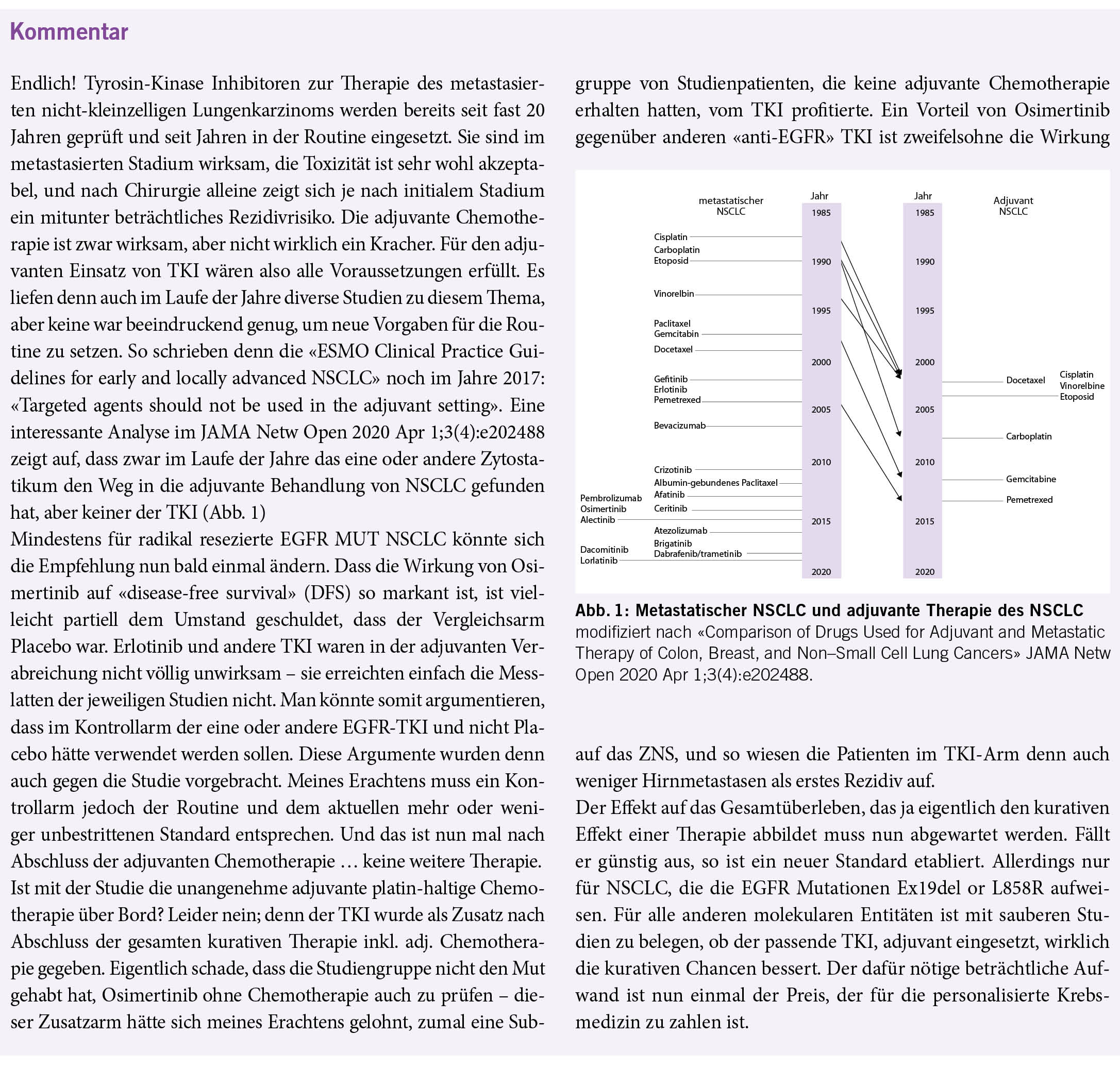- Kachexie: anspruchsvoll versus simpel
Kachexie: anspruchsvoll versus simpel
Roeland EJ et al: Management of cancer cachexia: ASCO guideline. J Clin Oncol 2020; 38: 2438.
Zusammenfassung: Dietary counseling may be offered with the goal of providing patients and caregivers with advice for the management of cachexia. Enteral feeding tubes and parenteral nutrition should not be used routinely. In the absence of more robust evidence, no specific pharmacological intervention can be recommended as the standard of care; therefore, clinicians may choose not to prescribe medications specifically for the treatment of cancer cachexia. Nonetheless, when it is decided to trial a drug to improve appetite and/or weight gain, currently available pharmacologic interventions that may be used include progesterone analogs and short-term (weeks) corticosteroids.
Urothelkarzinom − Check the point: Platin 1.line bleibt auf dem Platz
Powles T et al: Durvalumab alone and durvalumab plus tremelimumab versus chemotherapy in previously untreated patients with unresectable, locally advanced or metastatic urothelial carcinoma (DANUBE): a randomised open-label multicentre phase 3 trial. Lancet Oncol 2020; https://doi.org/10.1016/ S1470-2045(20)30541-6.
Zusammenfassung: Survival outcomes are poor for patients with metastatic urothelial carcinoma who receive standard, first-line, platinum-based chemotherapy. We assessed the overall survival of patients who received durvalumab (a PD-L1 inhibitor), with or without tremelimumab (a CTLA-4 inhibitor), as a first-line treatment for metastatic urothelial carcinoma. This study did not meet either of its co-primary endpoints.
NSCLC − Osimertinib adjuvant: klappt es nun?
Wu YL et al. Osimertinib in resected EGFR-mutated non-small-cell lung cancer. NEJM 2020; DOI: 10.1056/NEJMoa2027071.
Zusammenfassung: In patients with stage IB to IIIA EGFR mutation–positive NSCLC, disease-free survival was significantly longer among those who received osimertinib than among those who received placebo.
Nostalgische Erinnerung an Ice Cream
Kuroda H et al. Successful postoperative recovery management after thoracoscopic lobectomy and segmentectomy using an ERAS-based protocol of immediate ice cream intake and early ambulation: a 3-year study. Cancer Management and Research 2019:11 4201–4207.
Zusammenfassung: We developed enhanced recovery after surgery (ERAS) protocols involving immediate ice cream intake for checking postoperative chylothorax and subsequent early ambulation in order to investigate whether these methods have postoperative benefits. The results suggested that our ERAS protocol represented by immediate ice cream intake, and early ambulation is feasible and can help in reducing postoperative complications, chest drainage duration, and hospitalization after TSL.
Nachlese zum Artikel «Eating beef causes colon cancer»
Ich erhielt einen interessanten Kommentar von Prof. Heinz Läubli (MD PhD), Med. Onkologie und Tumorzentrum, Universitätsspital Basel:
Samraj AN, Läubli H et al. A red meat-derived glycan promotes inflammation and cancer progression. PNAS 2015; 112: 542.
Das Fehlen von GI-Tumoren bei Raubkatzen unterstützt einen möglichen Pathomechanismus, bei welchem eine chronische Immunreaktion gegen den nicht-menschlichen Zucker N-glycosyl-Neuraminsäure (Neu5Gc, somit ein Fremdantigen) aus rotem Fleisch die Entstehung von Karzinomen fördern könnte. Der Mensch kann Neu5Gc aus genetischen Gründen nicht selber bilden, wohl aber als Folge des Konsums von Fleisch in seinen Geweben einlagern, vor allem im Kolon. Die Folge ist die Bildung von Antikörpern, die ihrerseits eine chronische Entzündung auslösen, und damit den Boden für ein erhöhtes Karzinom-Risiko schaffen (man denke an das Kolonkarzinom-Risiko bei Colitis ulcerosa). Da Raubkatzen im Gegensatz zum H. sapiens selber Neu5Gc herstellen können, ist Neu5Gc bei Raubkatzen nicht immunogen und dieser Pathomechanismus kann bei ihnen nicht greifen.
In einer früheren Arbeit zu diesem Thema (Hedlund M et al PNAS 2008; 105: 18939) wurde überdies (ebenfalls an einem Mäusemodell) gezeigt, dass COX2-Inhibitoren Neu5Gc-vermittelte Entzündung bremsen können, und vielleicht über diesen Weg die Entstehung von GI-Karzinomen verhindern mögen. Tatsächlich gibt es ja alte Arbeiten, die eine Reduktion von Kolonkarzinomen und Kolonadenomen nachwiesen bei Patienten, denen Adenome koloskopisch entfernt worden waren (Arber N et al. N Engl J Med 2006; 355: 885).
Vielleicht müsste man ein Rinds-Entrecôte zur Sicherheit als Entrecôte Café de Paris au Célécoxib anbieten. Experimentelle Konzepte (und seien sie noch so spannend) können jedoch nicht ohne viel Federlesens auf die Praxis der Humanmedizin extrapoliert werden. Wie Herr Läubli mir so treffend schreibt: «Leider weiterhin alles nur Assoziationen und schwierig zu beweisen…». Er und ich essen aktuell weiterhin (gerne) Neu5Gc-haltiges Fleisch. Old habits die hard.
Bern
martin.fey@insel.ch
Beratungsmandat bei Nestlé Health Sciences, Epalinges, Aktien von Novartis, Roche und Johnson & Johnson










